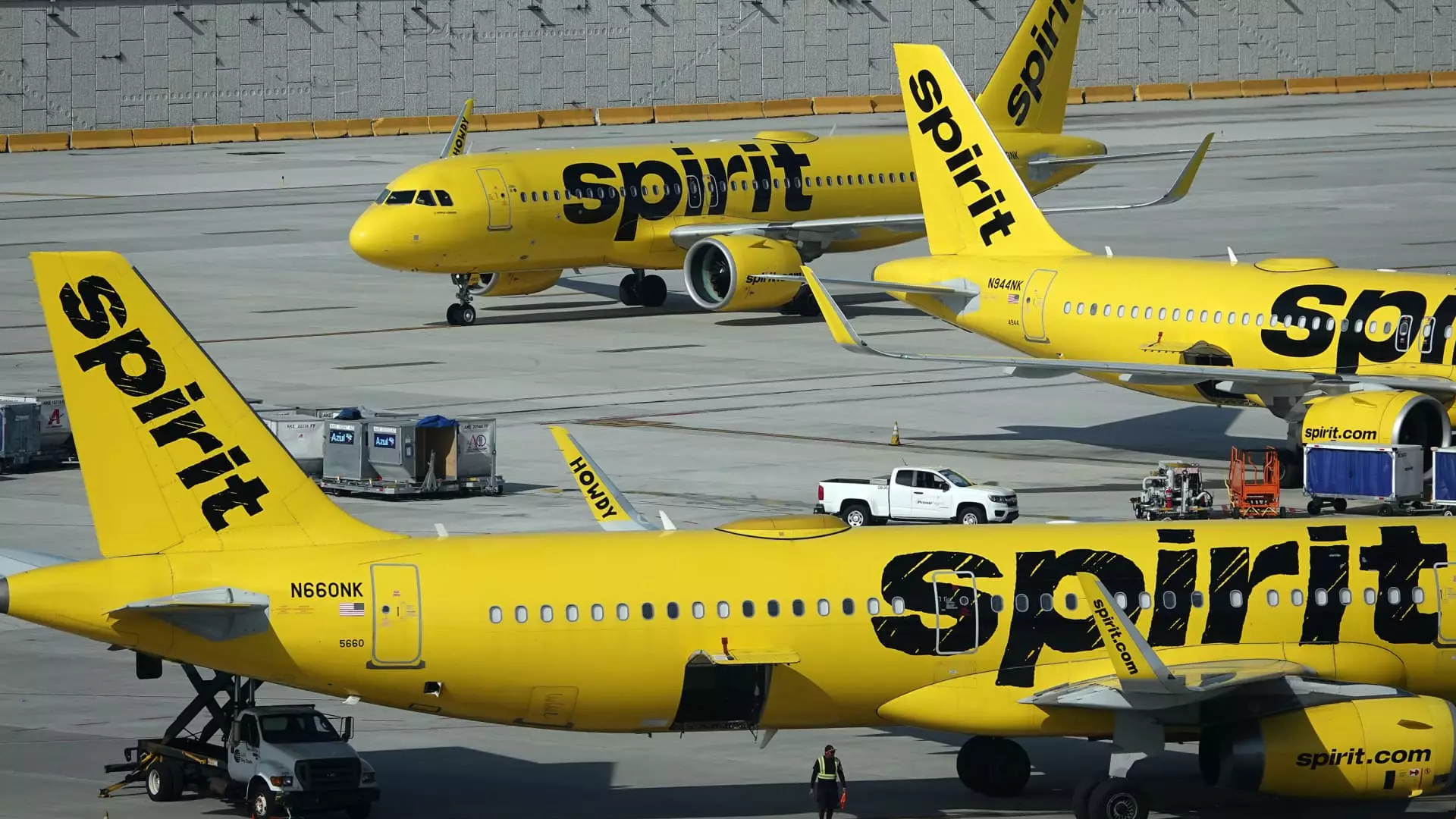In a decisive move to rebound from a turbulent financial period, Spirit Airlines has announced significant measures aimed at reducing costs and stabilizing its operational structure. Following a tumultuous couple of years exacerbated by the pandemic and changes in consumer travel preferences, the low-cost airline has unveiled plans to not only sell a portion of its aircraft but also to implement job cuts across its operations. Specifically, the airline has confirmed the sale of 23 older Airbus planes, which is projected to generate approximately $519 million in liquidity—a much-needed influx that could help alleviate pressing financial concerns.
Spirit’s troubles are not unfamiliar in the aviation industry, especially as the sector seeks to recover from the ramifications brought about by the COVID-19 pandemic. The airline has struggled to regain profitability, facing various obstacles such as the grounding of Pratt & Whitney-powered aircraft and shifts in customer demand. These issues have compounded Spirit’s financial burdens, resulting in an alarming decline in its stock value—over 80% year-to-date. To further complicate matters, a legal impediment regarding a proposed acquisition by JetBlue Airways has left Spirit in a vulnerable state, pushing it to seek alternative strategies to stabilize its business.
In its recent announcement, Spirit revealed that it aims to cut costs by approximately $80 million, primarily through workforce reductions. Although specific figures related to employee layoffs have not been disclosed, the company has already initiated furloughs for around 200 pilots. Interestingly, the situation for flight attendants appears more manageable, as voluntary leaves of absence have left the crew numbers surprisingly adequate. This strategy highlights the airline’s adaptive approach in navigating workforce challenges while managing operational capacity.
Despite the harsh realities it currently faces, Spirit Airlines remains cautiously optimistic about its future. The airline has indicated that it anticipates a reduction in capacity for 2025, aiming for a mid-teen percentage drop compared to current levels. This calculated approach is indicative of a larger trend within the airline industry, where consolidations and mergers have become more prominent. Reports emerging from industry sources suggest that discussions regarding a potential merger between Spirit and Frontier Airlines have resurfaced, generating a degree of excitement among investors and industry analysts alike.
A New Direction for Spirit Airlines
The recent spike in Spirit’s shares can partially be attributed to its announcement and the ongoing talks of a merger, demonstrating investor faith in a potential shift towards more robust operational strategies. With the airline projecting a third-quarter operating margin of -24.5%—an improvement from previous estimates—there is a glimmer of hope that the steps being taken will promote recovery in the long term. As Spirit Airlines navigates these transformative changes, the successful execution of its proposed strategies may provide a pathway to not just recovery but also renewed growth amidst a rapidly evolving aviation landscape.

Leave a Reply